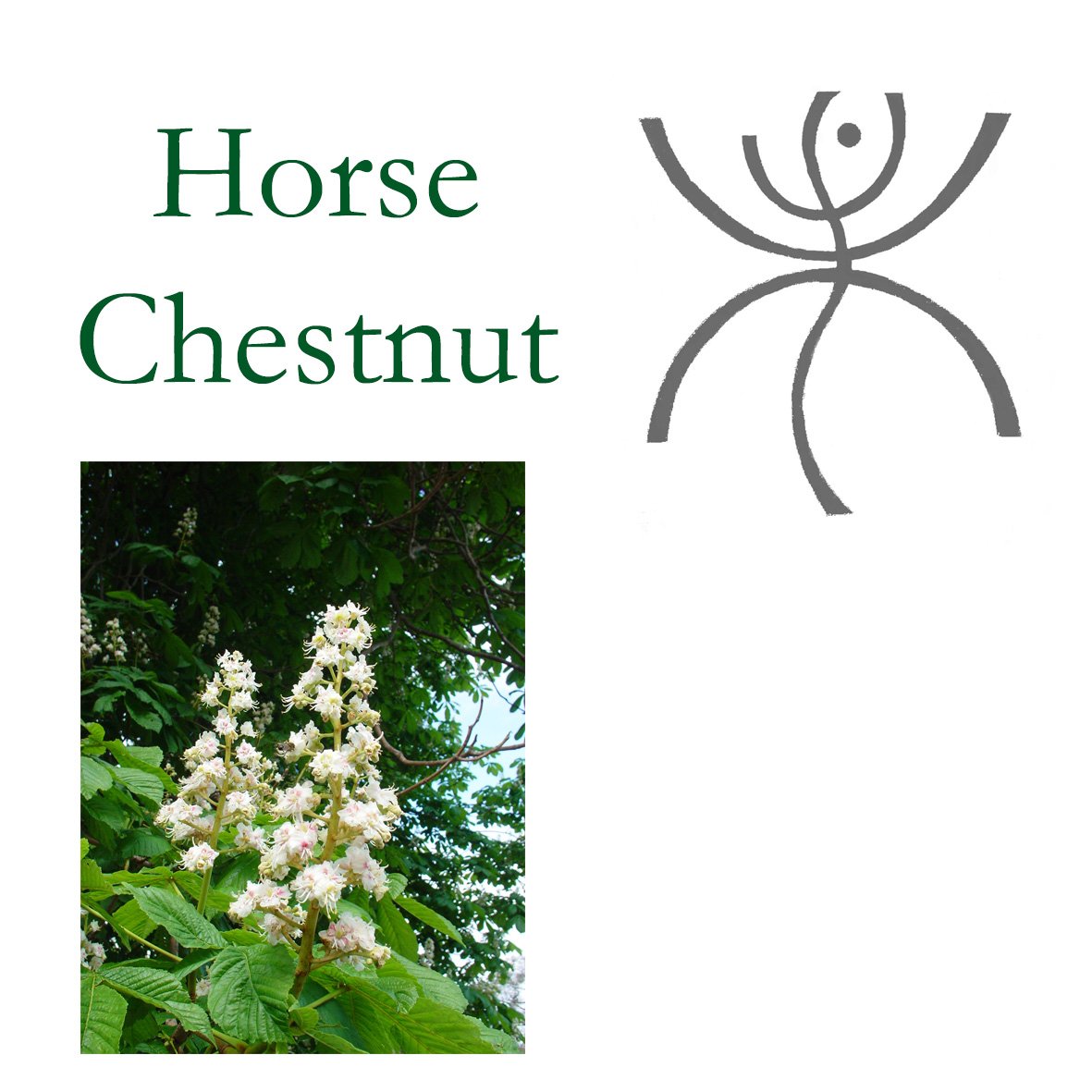HORSE CHESTNUT (Aesculus hippocastanum)
Key: Agitation.
Horse chestnut could be found throughout central Europe before the last Ice Age but retreated to the high, moist valleys of the Balkan peninsula where it remained until the Turks took it to Istanbul in 1569. The tree was finally introduced into Britain in 1629. Horse chestnut is one of the largest flowering trees of the temperate world, its symmetrical, domed crown of hand-like leaves reaching to over 100 ft. (35m). The gnarled branches sweep upwards, then down then up again at the tips. The trunk is usually short and thick, always with a spiral to the right. Its wood is soft, easily worked but not strong enough for much significant timber uses, so it is primarily planted for its magnificent candles of white flowers in late spring. Although trees can live for 300 years the average life-span is half that time.
The outer skin of the “conker” fruit contains saponin which is used in sun-shields as it blocks ultraviolet light. The bark is effective for sluggish circulation, weak blood vessels and haemorrhoids.
The primary energy of the essence focuses on spiritual peace and the flow of intuition and information from one level to another. It provides the ability to utilise and accept transpersonal information, and from the Higher self for example.
There is an increased understanding and empathy with others which reduces the friction caused by great contrast. Feelings of intolerance and impatience can be lessened. Horse chestnut creates a flow between differing energies-rather than agitation. This releases emotional pressure from the Spleen and Bladder meridians.
Base, solar plexus and crown chakra are affected. There is increased knowledge of what one requires and desires for physical well-being and balanced survival. There is a growth of wisdom that allows calm and clarity to develop and the ability to find one’s personal space and life.
There is a regulation of energy flow between the crown and base chakra s. This prevents any unnecessary build-up of energy and also grounds turbulence. This stress-free movement helps to bring about peace to agitated thoughts and repetitive patterns.
The calm and balance improves mental functioning. Fears, anxieties and over-rational intellectual or obsessive thought are lessened. Having quietened the surface levels of the mind the attention can dwell upon the surface levels of the mind the attention can dwell upon the deeper flows of intuition and the realisation that mind creates personal reality and what goals are considered worthwhile.
Signature: The white “candles” like a steady, calm mind, are undisturbed by emotional “winds”.
Comment: Edward Bach used this tree essence, called White Chestnut, for internal, repetitive thoughts or anxieties. The bark, when dried by gentle heat, has tonic, narcotic and febrifuge properties and is used for intermittent fevers, given as an infusion. External ulcers have also been treated with the bark infusion. The fruits are effective as a treatment for haemorrhoids, rheumatism and neuralgia.

